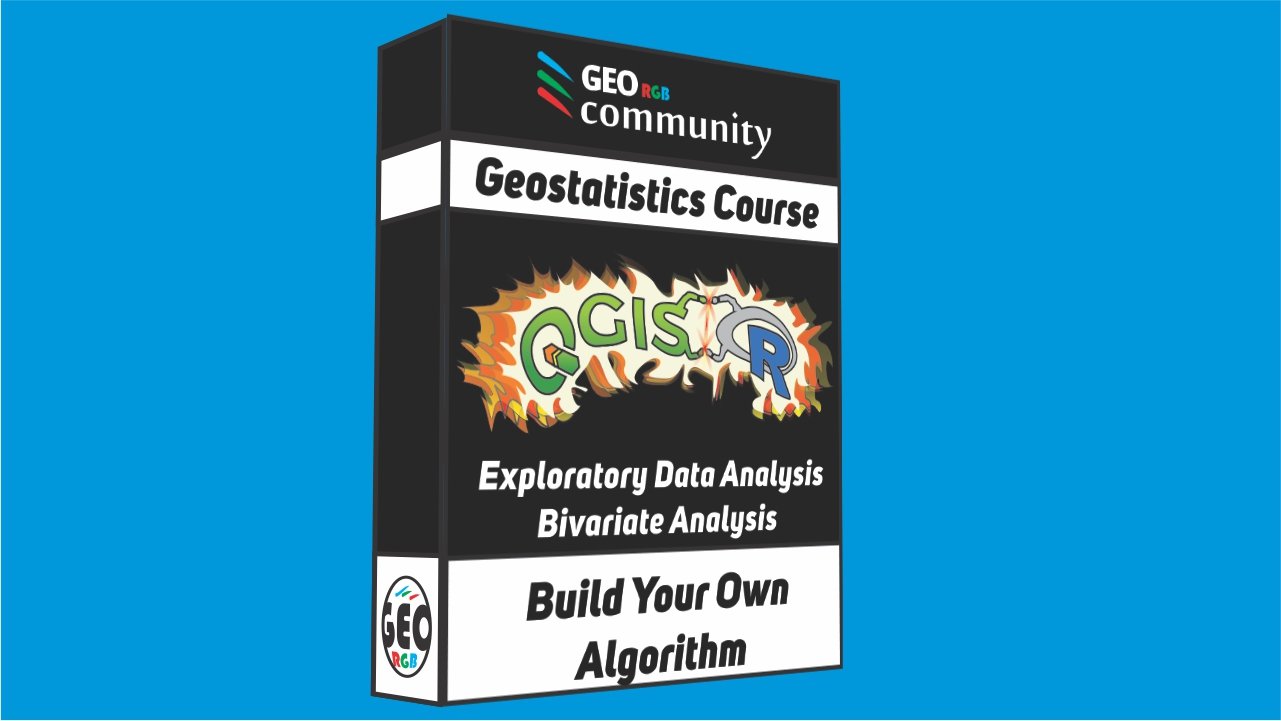
About Course
Second geostatistics course. Bivariate analysis with R and QGIS.
Introduction
This Second geostatistics course. Bivariate analysis with R and QGIS is a continuation of the first Geostatistics Course for Beginners. Creating algorithms with R for QGIS. Univariate analysis.
In the first course, we saw how to complete a professional univariate analysis using QGIS and R. That analysis was executed during the exploratory data analysis. In the second course, we are still working on the exploratory data analysis. However, this second courses is about bivariate analysis.
Course objectives
The goals of this second course are:
- Learn the basic of the geostatistics
- Acquire knowledge on performing professional exploratory data analysis
- Become proficient in the tools used in the bivariate analysis
- Gain understanding in coding with R
- Learn how to integrate the R scripts in QGIS
- Acquire skills in QGIS
Course requisites
Anyone can be part of this course. After all, the level of the course is for beginners. However, it is essential to take the first course in order to understand the second one. In this second course, the explanations are going to be very simple and with real examples. Thus, it is a step-by-step course, easy to follow and easy to apply what you are learning. In addition, I am going to provide everything for the course, lessons, data, software, etc.
Link for the first course:
Course achievements
Once finished the Second geostatistics Course for Beginners, your QGIS will become a stronger tool for spatial data analysis; and most important, you will get a better understanding on the exploratory data analysis.
Course recommendations
In addition to the requested first course, we recommend to take the following courses / tutorials to have a better understanding on geostatistics. Also you will gain some experience using QGIS. You can follow the links below:
Course Content
Lesson 1
-
Bivariate Analysis. Scatter Plot Introduction
33:54



